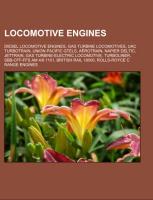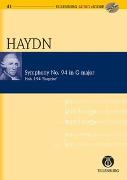Locomotive engines
BücherAngebote / Angebote:
Source: Wikipedia. Pages: 32. Chapters: Diesel locomotive engines, Gas turbine locomotives, UAC TurboTrain, Union Pacific GTELs, Aérotrain, Napier Deltic, JetTrain, Gas turbine-electric locomotive, Turboliner, SBB-CFF-FFS Am 4/6 1101, British Rail 18000, Rolls-Royce C range engines, EMD 645, Gas turbine train, British Rail APT-E, EMD 710, British Rail 18100, EMD 567, Paxman, Sulzer, ALCO 251, Paxman Valenta, British Rail GT3, English Electric diesel engines, ALCO 539T, M-497 Black Beetle, Turbojet train, Prime mover, EMD 265, RK 215. Excerpt: The UAC TurboTrain was an early high-speed, gas turbine train manufactured by United Aircraft Corporation that operated in Canada between 1968 and 1984 and in the United States between 1968 and 1976 (though they were not disposed of by Amtrak until 1980). It was one of the first gas turbine powered trains to enter service for passenger traffic, and was also one of the first tilting trains to enter service. Passenger trains have fundamentally different needs than freight trains, but for much of early history the two needs had been served by the same engines for reasons of economy. The introduction of newer materials and construction methods, notably lightweight construction using aluminum and stainless steel, led to a revolution in design and the need for entire trainsets dedicated to passenger use. This evolution led to the introduction of articulated trains (or "unit trains"), where the passenger cars were fixed to each other and difficult, or impossible, to separate. By sharing a single bogie between the cars, weight could be further reduced, and performance increased. The classic examples of the articulated passenger trainset are the M-10000 and Pioneer Zephyr of 1934. In practice, the flexibility offered by detachable cars proved too much to overcome any advantages of the articulated style, and the articulated trainset remained relatively rare, at least in North America. One major limitation to the evolution of existing trainsets to higher speeds was the centrifugal forces generated on curves at high speeds. The rails and cars could be strengthened to handle these stresses, but passengers could not. This limited speeds on many portions of mainline routes, where it would be difficult to lay new track with gentler curves. The solution to this problem was the tilting train. Experiments with tilting cars had been carried out in the US as early as 1938, but no commercial development took place until the Spanish Talgo suspensions were introduced in the 1950s. The tilt
Folgt in ca. 5 Arbeitstagen

